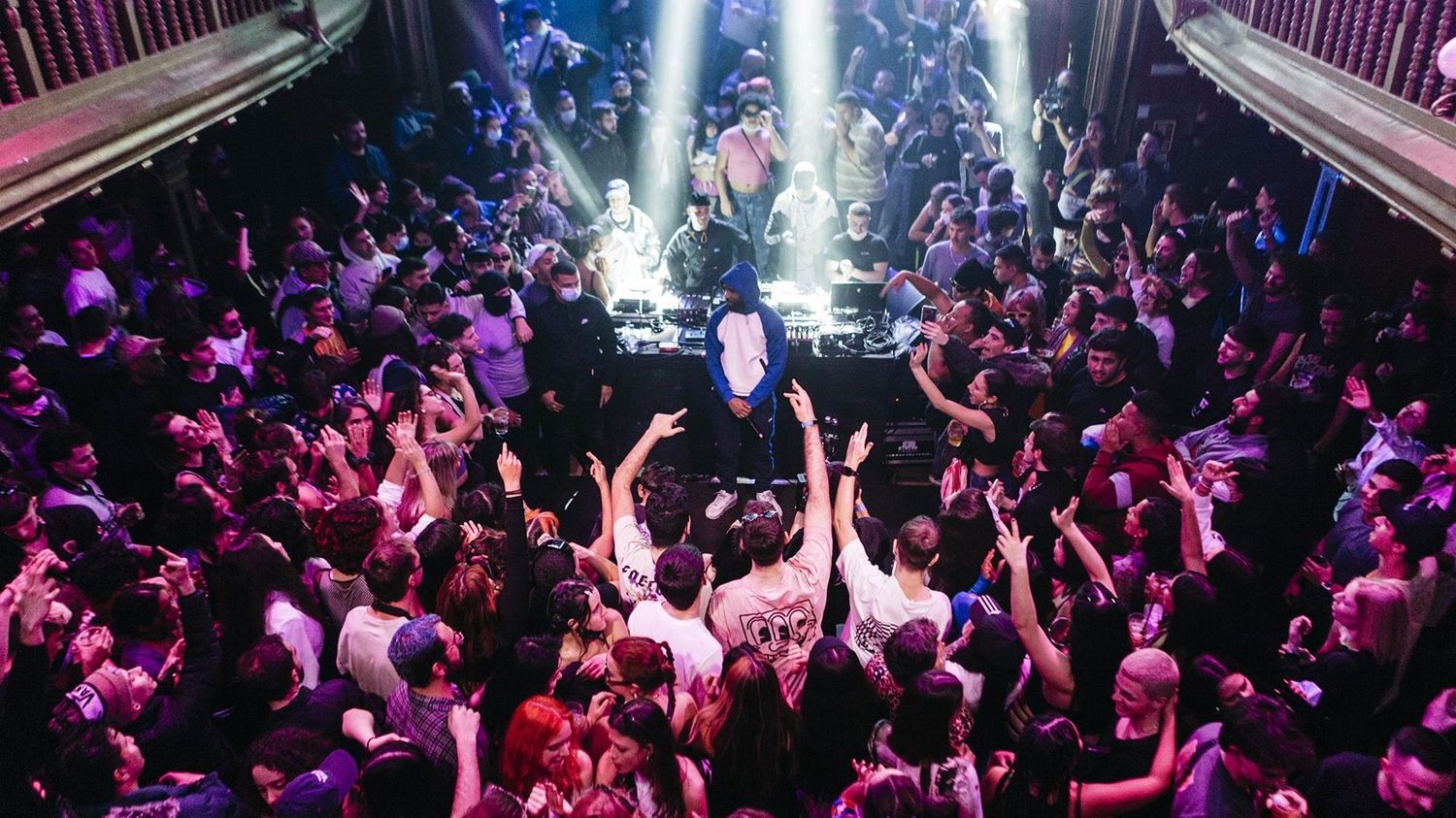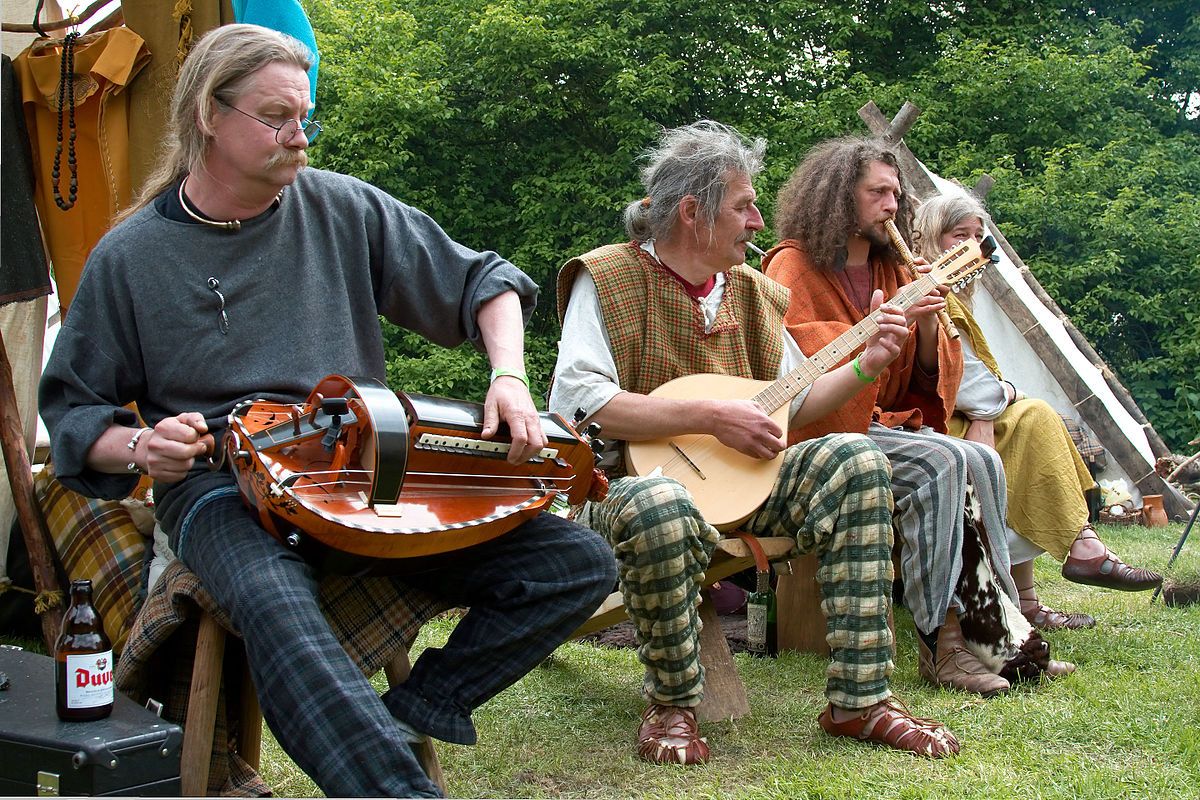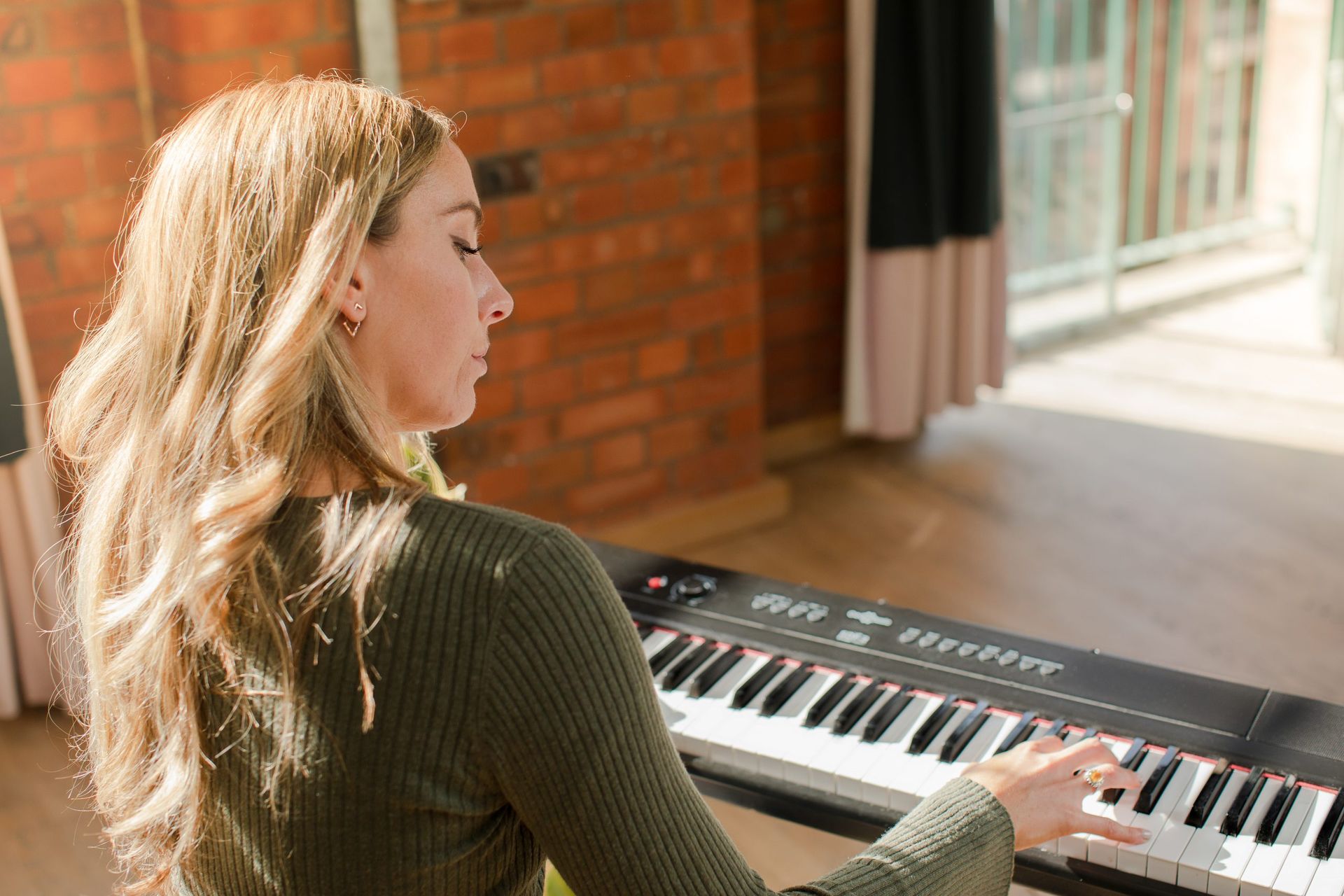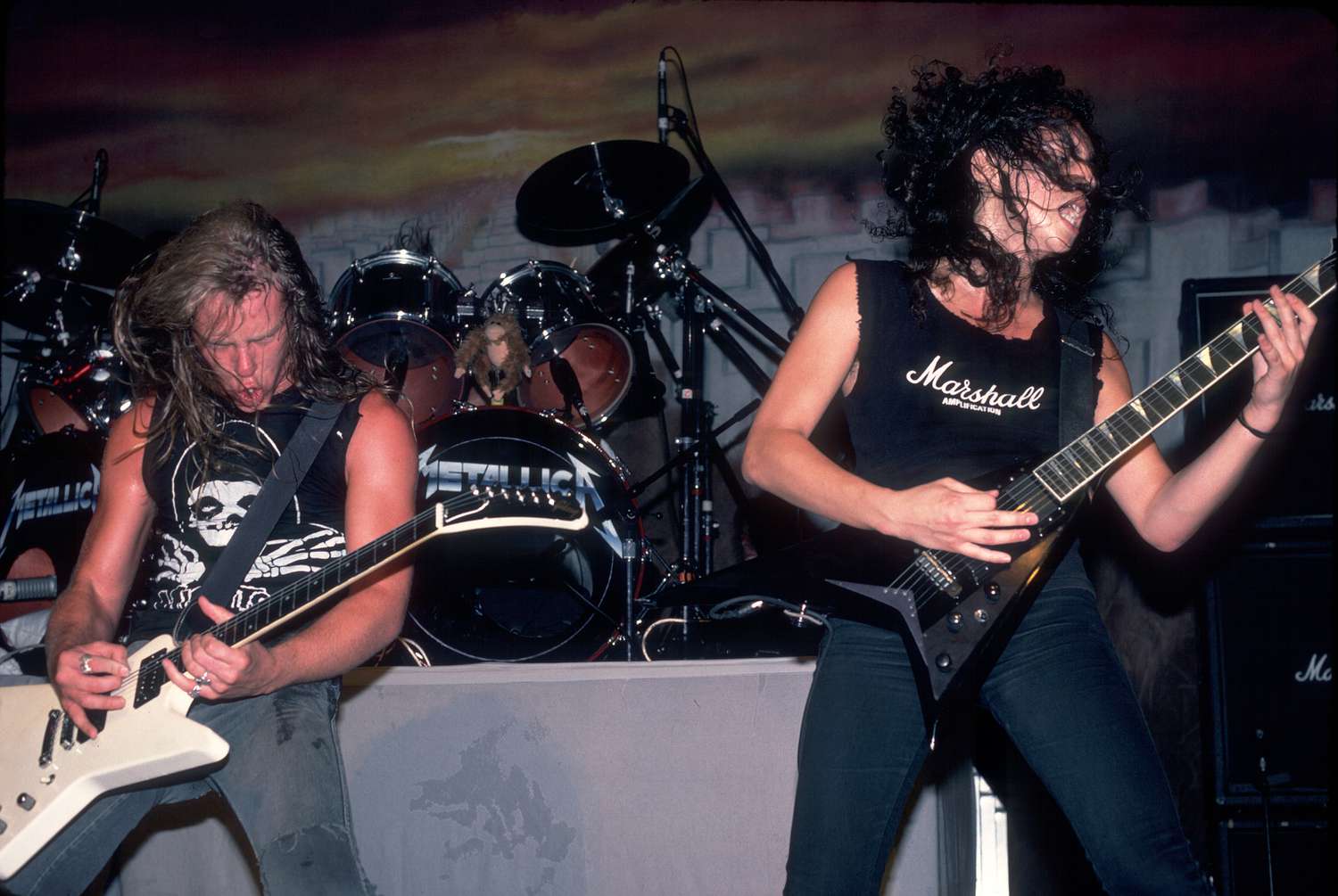Home>Production & Technology>Tempo>What Is The Ideal Tempo For Latin Music
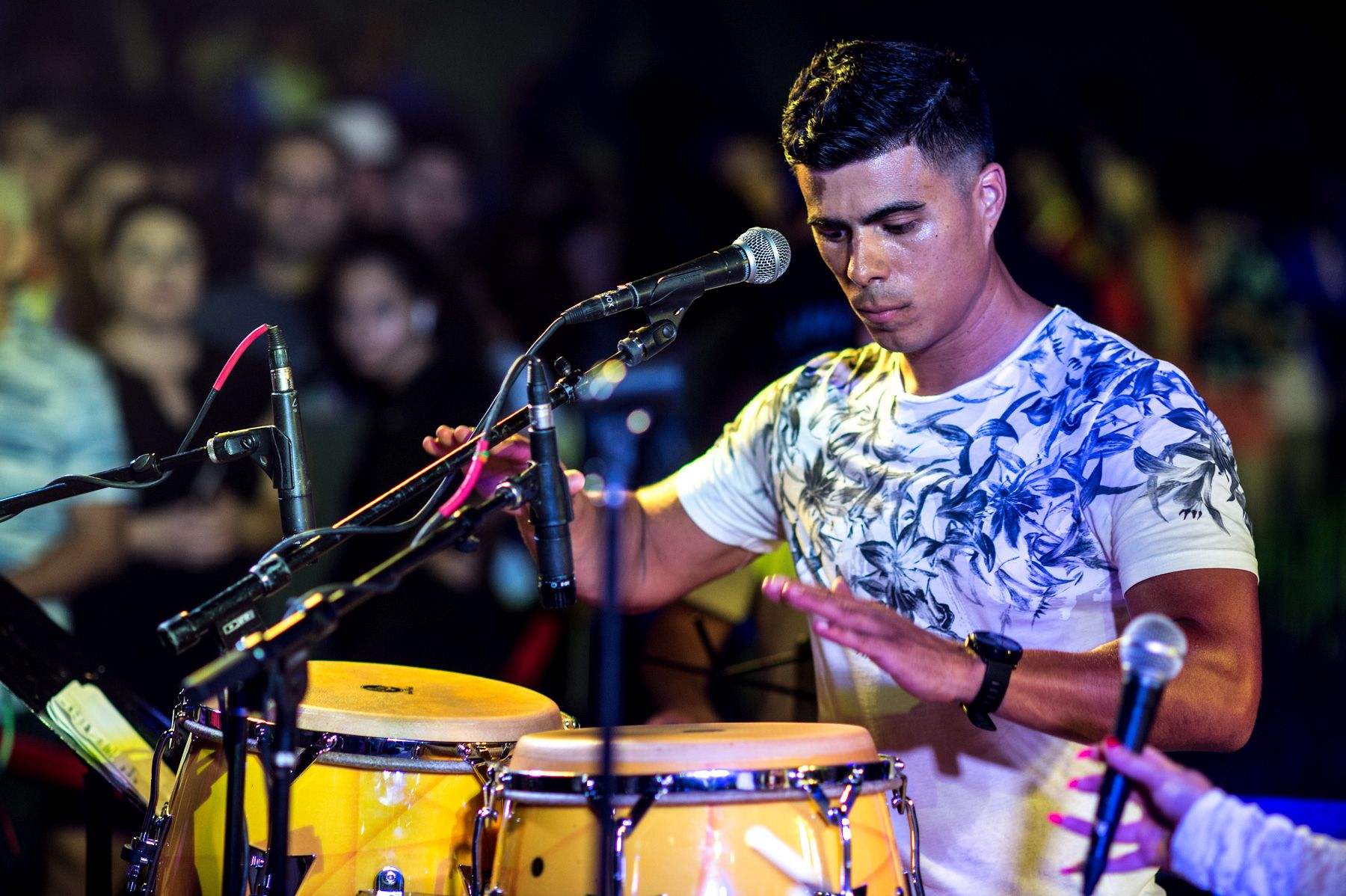

Tempo
What Is The Ideal Tempo For Latin Music
Published: December 10, 2023
Discover the perfect tempo for your Latin music. Learn how to choose the ideal pace for your beats and rhythms. Enhance your Latin music production now!
(Many of the links in this article redirect to a specific reviewed product. Your purchase of these products through affiliate links helps to generate commission for AudioLover.com, at no extra cost. Learn more)
Table of Contents
- Introduction
- The Importance of Tempo in Latin Music
- Factors to Consider When Determining Tempo in Latin Music
- Traditional Tempos in Different Latin Music Genres
- Influence of Tempo on Dance in Latin Music
- Modern Approaches to Tempo in Latin Music
- Case Studies of Famous Latin Songs and their Tempos
- Conclusion
Introduction
Latin music is known for its infectious rhythms and vibrant energy that makes it impossible to resist dancing along. One of the key elements that contributes to the unique sound and character of Latin music is tempo. Tempo refers to the speed or pace at which a piece of music is played. It plays a crucial role in shaping the overall mood, intensity, and groove of a song.
Whether it’s salsa, merengue, bachata, or reggaeton, each genre within Latin music has its own ideal tempo that defines its identity and impact. Understanding and harnessing the power of tempo is essential for musicians, producers, and dancers in order to create authentic and captivating Latin music experiences.
In this article, we will delve into the various aspects of tempo in Latin music, exploring its importance, factors to consider when determining tempo, traditional tempos in different genres, the influence of tempo on dance, modern approaches to tempo, and even examine case studies of famous Latin songs and their tempos.
By the end of this article, you will have a comprehensive understanding of why tempo is a crucial component in Latin music and how it contributes to the overall experience for both musicians and listeners.
The Importance of Tempo in Latin Music
Tempo serves as the heartbeat of Latin music, setting the pace and energy for the entire composition. It is a fundamental element that impacts the overall feel and groove of a song, making it essential for capturing the essence of Latin music. The right tempo can transport listeners to the vibrant streets of Havana or the lively dance floors of Puerto Rico.
Latin music is deeply rooted in cultural traditions and the fusion of various musical styles. Tempo plays a significant role in preserving these traditions and ensuring the authenticity of the music. Different genres within Latin music have their own distinct tempos that have been established over generations, and deviating from these tempos can alter the essence of the genre itself.
Further, tempo drives the emotional impact and intensity of Latin music. A slower tempo can create a sensuous and romantic atmosphere, as seen in boleros or bachatas, while a fast tempo with intricate rhythms can ignite the dance floor, as found in salsa or merengue. The tempo not only affects the musicians and dancers, but also the listeners who are immersed in the energy and excitement of the music.
Another aspect of tempo in Latin music is its connection to the heartbeat. Latin music often reflects the pulse and passion of the culture it originates from, and the tempo reflects the natural rhythms of life. The infectious syncopation and syncopated beats in Latin music are best experienced at the optimal tempos, allowing the music to resonate with the listeners on a visceral level.
Overall, tempo is a key ingredient in shaping the identity and impact of Latin music. It captures the essence of tradition, drives the emotional intensity, and connects the listener to the vibrant spirit of the music. Understanding the importance of tempo is crucial for musicians and producers in creating authentic and captivating Latin music experiences.
Factors to Consider When Determining Tempo in Latin Music
Determining the right tempo for Latin music requires careful consideration of various factors to ensure the authenticity, groove, and energy of the music. Here are some important factors to consider:
- Genre: Each genre within Latin music has its own established range of tempos. Salsa, for example, typically falls within the range of 150-180 beats per minute (BPM), while merengue tends to be faster at around 180-200 BPM. Understanding the traditional tempos associated with each genre is essential in order to maintain the genre’s unique identity.
- Danceability: Latin music is intimately connected with dance, and the tempo plays a crucial role in determining the danceability of a song. The tempo should be conducive to the specific dance style associated with the genre. For example, salsa dancers thrive on the energetic and rhythmic patterns created by the ideal tempo range, enabling fluid and dynamic movements on the dance floor.
- Musical Feel: The desired emotional impact and musical feel of a composition are important considerations when determining tempo. For more introspective or romantic genres like bolero or bossa nova, a slower tempo is often preferred. Conversely, for genres that emphasize high energy and excitement, such as reggaeton or cumbia, a faster tempo is appropriate to create a lively and energetic atmosphere.
- Instrumentation: The choice and arrangement of instruments in a Latin music composition can influence the ideal tempo. For example, songs with intricate percussion arrangements may require a slightly slower tempo to allow the rhythms to be executed with precision and clarity. On the other hand, songs with a predominantly melodic focus may benefit from a faster tempo to maintain the energy and forward momentum.
- Cultural Context: Latin music is deeply intertwined with culture, history, and identity. Considering the cultural context and heritage associated with a particular genre or region can guide the selection of an appropriate tempo. It is important to honor and respect the musical traditions and historical significance linked to the music.
By carefully considering these factors, musicians, producers, and dancers can determine the ideal tempo for a Latin music composition. Balancing tradition, danceability, musical feel, instrumentation, and cultural context will help to create an authentic and engaging Latin music experience.
Traditional Tempos in Different Latin Music Genres
Latin music is incredibly diverse, encompassing a wide range of genres, each with their own unique tempo characteristics. Understanding the traditional tempos associated with different Latin music genres is essential for capturing the essence and style of the music. Here are some examples of traditional tempos in popular Latin music genres:
- Salsa: Salsa is known for its infectious rhythms and energetic dance style. It typically has a tempo range of 150-180 beats per minute (BPM). This lively tempo allows for intricate footwork, fast spins, and syncopated movements on the dance floor.
- Merengue: Merengue is a fast-paced and joyful genre originating from the Dominican Republic. It is characterized by its lively 2/4 rhythm and upbeat tempo. The traditional tempo for merengue ranges from 180-200 BPM, creating a vibrant and dynamic atmosphere that is perfect for quick-paced footwork and hip movements.
- Bachata: Bachata, a genre with roots in the Dominican Republic, is known for its romantic and sensual vibe. It typically has a slower tempo compared to salsa and merengue, ranging from 120-140 BPM. The slower tempo allows dancers to connect with the emotions and melodies of the music, focusing on intricate footwork and intimate partner connections.
- Cumbia: Cumbia is a popular genre with origins in Colombia. It is often characterized by its infectious rhythms and lively tempo. Cumbia can vary in tempo depending on the specific style and region, but generally falls within the range of 130-150 BPM. The upbeat tempo of cumbia encourages energetic movements and joyful dancing.
- Reggaeton: Reggaeton is a genre that emerged from Puerto Rico and has gained worldwide popularity. It is characterized by its fusion of reggae and Latin rhythms, as well as its catchy and energetic beats. The tempo of reggaeton typically falls within the range of 80-100 BPM, providing a medium-paced groove that allows for both sensual body movements and dynamic footwork.
These are just a few examples of traditional tempos in different Latin music genres. It’s important to note that within each genre, there can be variations and different sub-styles that may have slightly different tempos. The traditional tempos serve as a foundation, but artists and musicians have the freedom to experiment and push the boundaries while still maintaining the essence and spirit of the genre.
Influence of Tempo on Dance in Latin Music
The tempo of Latin music has a profound influence on the way people dance to it. Latin dances are intricately connected to the rhythms and energy of the music, and the tempo plays a crucial role in shaping the style, intensity, and dynamics of the dance. Here are some ways in which tempo influences dance in Latin music:
- Energizing Movements: The tempo of Latin music provides the energy and drive that fuels the movements in dance. A fast tempo, such as in salsa or merengue, encourages dynamic footwork, rapid spins, and intricate patterns. The quick pace creates a sense of excitement and exhilaration on the dance floor, pushing dancers to showcase their agility and speed.
- Emotional Expression: The tempo of Latin music helps to convey the emotions and mood of the dance. A slower tempo, like in bolero or bachata, allows for more intimate and expressive movements. Dancers can focus on fluid body movements, sensual partner connections, and the emotional nuances of the music. The slower pace creates a more introspective and heartfelt dance experience.
- Syncopation and Musicality: Latin music often incorporates syncopated rhythms and complex beats. The tempo dictates the timing and execution of these patterns, which in turn influences the dance. Dancers must stay in sync with the music, accentuating specific beats and syncopations through their movements. The tempo sets the foundation for the intricate footwork, isolations, and body movements that showcase the musicality of the dance.
- Partner Connections: In partner dances like salsa or bachata, the tempo directly affects the connection and communication between partners. The tempo dictates the timing of lead and follow movements, allowing dancers to connect and respond to each other seamlessly. The ability to dance in sync with the music, anticipate changes in tempo, and maintain the desired energy level is essential for a successful partner dance experience.
- Adaptability and Creativity: The tempo of Latin music offers dancers the opportunity to adapt and be creative in their movements. Dancers can explore different styles and variations within a genre by adjusting their speed, energy, and level of complexity according to the tempo. This adaptability allows for personal expression and gives dancers the freedom to interpret the music in their own unique way.
The influence of tempo on dance in Latin music is evident in the rich variety of dance styles and the passion with which they are performed. Whether it’s the fast and energetic movements of salsa or the intimate and sensual expressions of bachata, the tempo sets the stage for dancers to connect with the music, showcase their skills, and immerse themselves in the joy of Latin dancing.
Modern Approaches to Tempo in Latin Music
While Latin music has strong roots in tradition, it has also evolved over time, embracing modern approaches to tempo. Contemporary artists and musicians have brought new perspectives and experimentation to the genre, pushing the boundaries of tempo and incorporating elements from other musical styles. Here are some modern approaches to tempo in Latin music:
- Fusion of Genres: Artists today often blend Latin music with other genres such as pop, hip-hop, EDM, and R&B. This fusion allows for diverse tempos and rhythmic structures, creating innovative and eclectic sounds. The incorporation of different tempos from various genres brings a fresh and dynamic approach to Latin music, appealing to a wider audience.
- Electronic Influences: With the rise of technology and electronic music production, Latin music has embraced electronic influences. Electronic beats and production techniques can modify the tempo, creating unique rhythmic patterns and grooves. This experimentation with electronic elements adds a contemporary touch to Latin music and expands the possibilities of tempo exploration.
- Remix Culture: Remixes have become prevalent in the Latin music scene, allowing for reinterpretation and reinvention of traditional songs. DJs and producers often manipulate the tempo of original recordings, subtly or radically altering the feel of the music. This remix culture opens up opportunities to experiment with different tempos and breathe new life into classic Latin tracks.
- Experimental Rhythms: Contemporary Latin musicians are not afraid to experiment with complex and unconventional rhythmic patterns. They push the boundaries of traditional tempos, exploring asymmetrical meters and syncopated rhythms. These innovative approaches to tempo challenge the listener and the dancer, providing a fresh and unique experience.
- Tempo Variations Within a Song: Another modern approach to tempo in Latin music is the inclusion of tempo variations within a single composition. Artists may choose to start a song at a slow tempo and gradually increase the speed, or they may incorporate tempo changes to create contrasting sections within the music. These variations add texture and excitement to the music, keeping the listener engaged and providing opportunities for creative choreography in dance performances.
These modern approaches to tempo in Latin music showcase the evolving nature of the genre while maintaining its core essence. By embracing fusion, electronic influences, remix culture, experimental rhythms, and tempo variations within songs, Latin music continues to captivate and engage audiences with its innovative and dynamic sound.
Case Studies of Famous Latin Songs and their Tempos
Examining famous Latin songs and their tempos provides valuable insights into the diverse range of tempos used in Latin music. Let’s explore a few case studies of well-known Latin songs and their tempos:
- “Despacito” by Luis Fonsi and Daddy Yankee: This global hit, which played a significant role in introducing reggaeton to a global audience, has a tempo of approximately 89 BPM. The slower tempo allows for the smooth and sensual movements that are characteristic of the dance style associated with the song.
- “Oye Como Va” by Tito Puente: This iconic song, originally recorded by Tito Puente and made famous by Santana’s cover, features a classic salsa tempo of around 155 BPM. The uptempo rhythm creates an infectious groove that compels dancers to move their feet to the vibrant beats.
- “Bailando” by Enrique Iglesias: With a tempo of around 120 BPM, “Bailando” blends Latin pop and reggaeton rhythms. The mid-tempo feel allows for a mix of energetic footwork and sensual body movements, making it a popular choice for both social dancing and performances.
- “La Bamba” by Ritchie Valens: This timeless Latin rock and roll classic has a fast tempo of approximately 160 BPM. The upbeat tempo reflects the joyful and energetic nature of the song, inspiring dancers to move and groove with enthusiasm.
- “Danza Kuduro” by Don Omar ft. Lucenzo: This worldwide hit seamlessly blends Latin and Caribbean rhythms, specifically merengue and reggaeton. With a tempo of around 130 BPM, the song exudes energy and encourages lively movements on the dance floor.
These case studies demonstrate the diversity of tempos within Latin music, highlighting the range of styles and genres that fall under the umbrella of Latin music. Each song’s tempo is carefully chosen to complement the style, energy, and danceability of the music, showcasing the powerful connection between tempo and the overall impact of a song.
Conclusion
Tempo plays a significant role in shaping the vibrant and energetic world of Latin music. From the lively beats of salsa to the sensual rhythms of bachata, tempo sets the pace, groove, and intensity of the music. It influences the way people dance, the emotions evoked, and the cultural traditions maintained. Understanding the importance of tempo in Latin music is essential for musicians, producers, and dancers who seek to create authentic and captivating experiences.
Traditionally, different Latin music genres have their own established tempos that have defined their identities over time. Salsa, merengue, bachata, cumbia, and reggaeton all have distinct tempo ranges that capture the essence of each style. These tempos are the foundation upon which the music and the accompanying dance movements are built.
While honoring tradition is crucial, modern approaches to tempo in Latin music have emerged, allowing for experimentation and fusion with other genres. Artists integrate electronic elements, explore unconventional rhythms, and introduce tempo variations within songs. These innovative approaches ensure that Latin music continues to evolve and appeal to a global audience.
Famous Latin songs serve as case studies, demonstrating how tempo is intricately linked to their success and impact. From the slow and sensual tempo of “Despacito” to the fast-paced and energetic tempo of “La Bamba,” each song showcases how tempo shapes the dance style, emotional expression, and overall experience of the music.
In conclusion, tempo is a vital element in Latin music. It sets the rhythm, energy, and mood of the music, influencing dance movements, emotional connections, and cultural traditions. Whether adhering to traditional tempos or exploring new approaches, understanding and harnessing the power of tempo is essential for creating authentic and captivating Latin music experiences.







